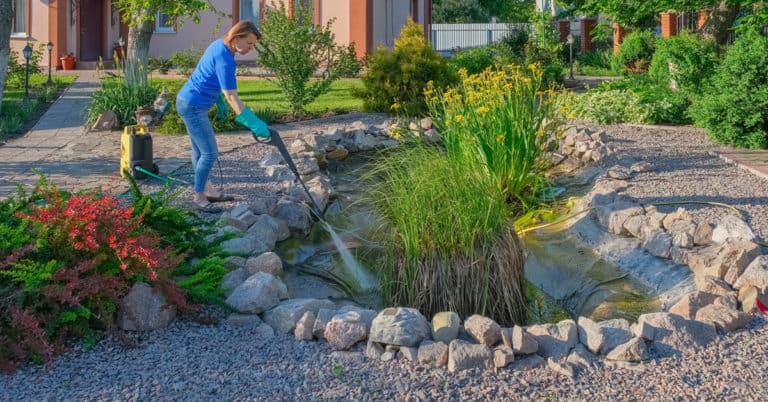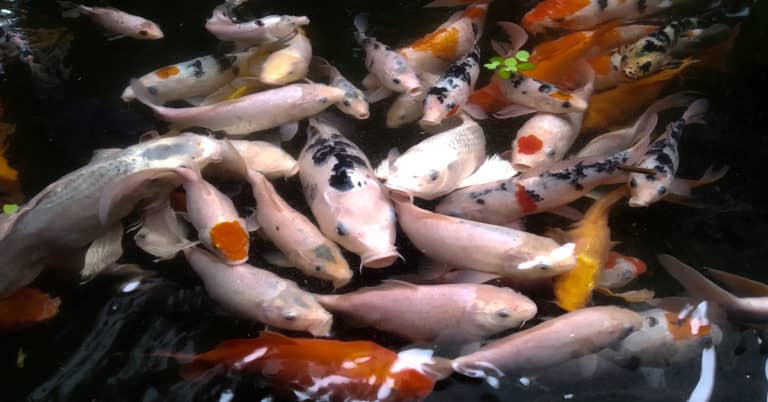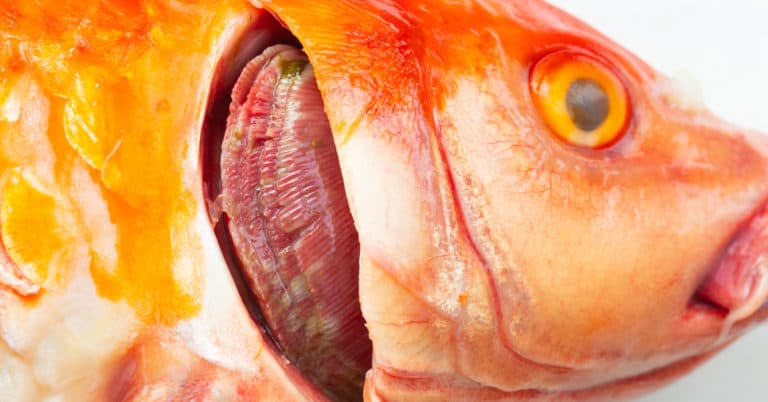As a responsible pond owner, the health and wellbeing of your Koi should be priority number one. There’s a long list of things that can be harmful to your fish, but one of the most common and potentially consequential is Koi ulcers.
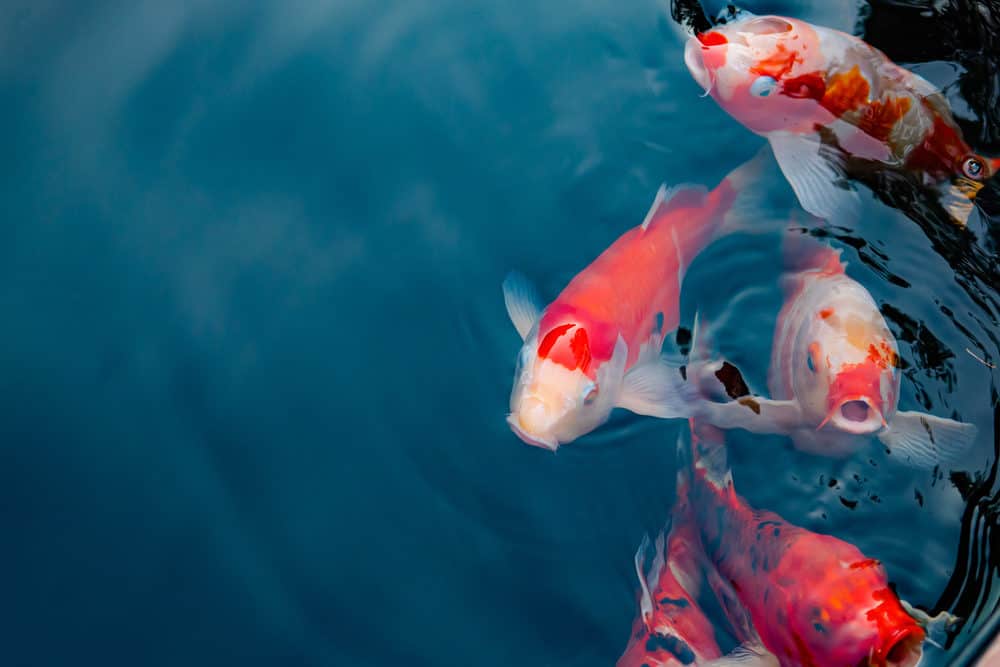
This nasty skin affliction can affect Koi fish of all different varieties, environments, and stages of life. While ulcers may start as relatively minor, they can get quite nasty-even life-threatening-if left untreated.
In this article, we’ll provide some general information on Koi ulcers and how to spot them, along with tips for treating ulcerative fish without help from a vet.
Ulcers are boil-like sores that form on the skin of Koi and other species of fish. They’re recognizable by their bright red color and inflamed appearance, though they can also be pink, orange, brown, or even bluish in hue.
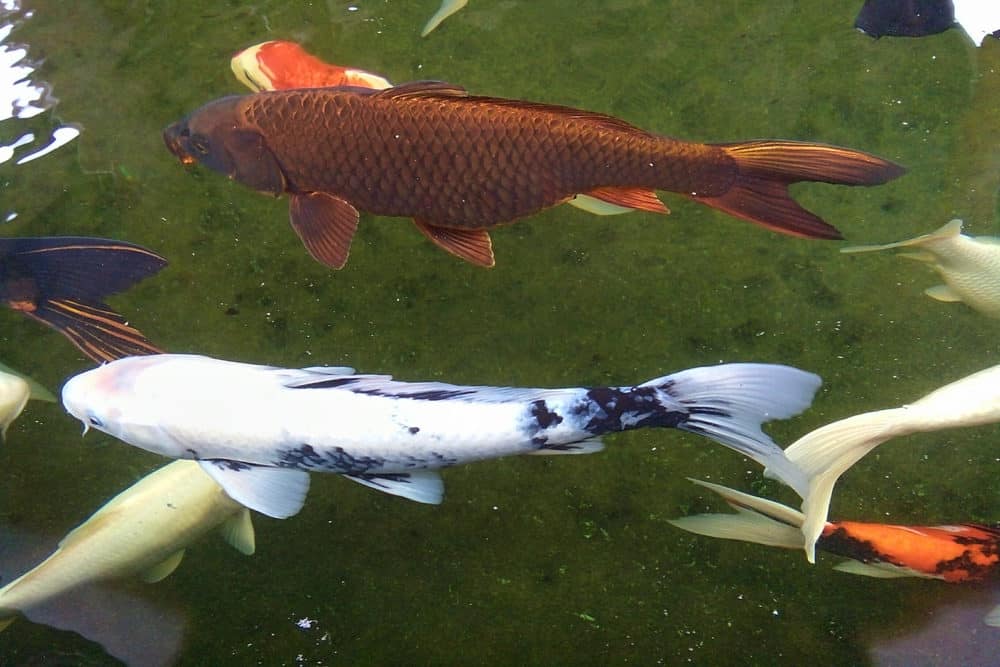
Ulcers vary in size, shape, and location, but they show up most often on the dorsal region, around the fins, or even on or inside the gills. Despite their alarming and unpleasant features, ulcers aren’t always apparent. This is especially true when they develop on a fish’s underbelly. This covert factor makes them even more troubling.
If you’ve ever had a stomach ulcer, you know just how terrible these sorts of sores can be. The same is true for Koi, whose quality of life often declines following the formation of ulcers.
Koi ulcer disease (KUD) is almost always the result of bacterial infection-more specifically, a skin infection by the pathogenic bacterium Aeromonas salmonicida, which typically targets salmonids.
This bacterium, and many others like it, thrives in dirty, nutrient-rich water like the kind found in Koi ponds.
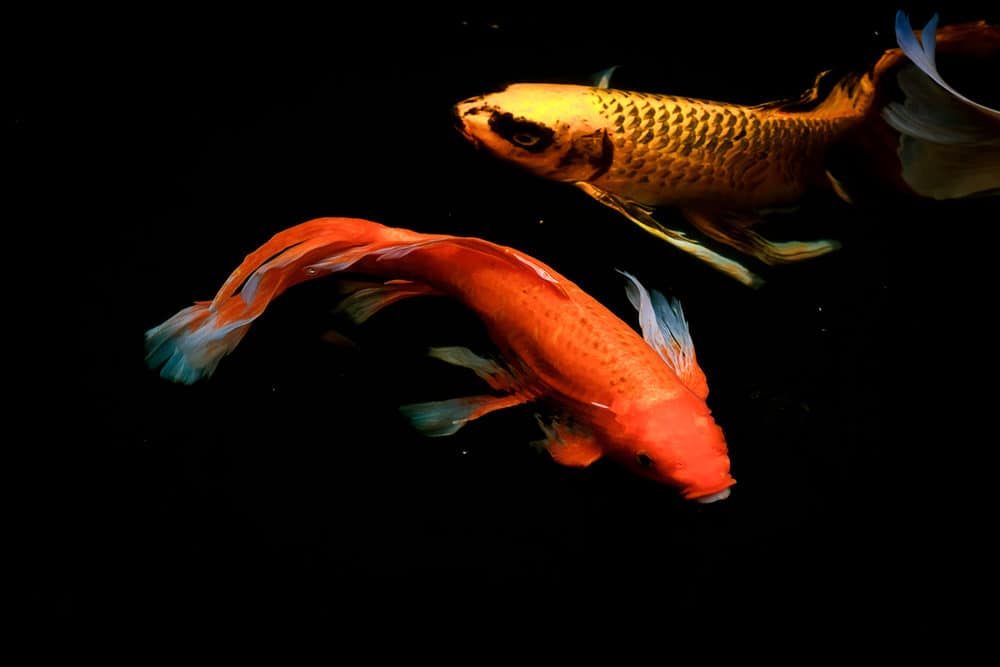
If a fish with a wound or a weakened immune system comes into contact with A. salmonicida, the bacterium can penetrate its mucoid slime layer and scales and make its way into the skin beneath. The bacteria then feed on the exposed skin cells, eventually producing raw, angry-looking lesions.
Though A. salmonicida is the usual suspect in cases of KUD, ichthyologists and veterinary scientists have identified other conditions that might open the door for bacteria.
Parasites like flukes, anchor worms, costia, and ichthyophthirius multifiliis (or “ich” for short) can wreak havoc on a Koi’s immune system. With its natural defenses lowered, the fish can become easy prey for pathogenic bacteria like Aeromonas salmonicida.
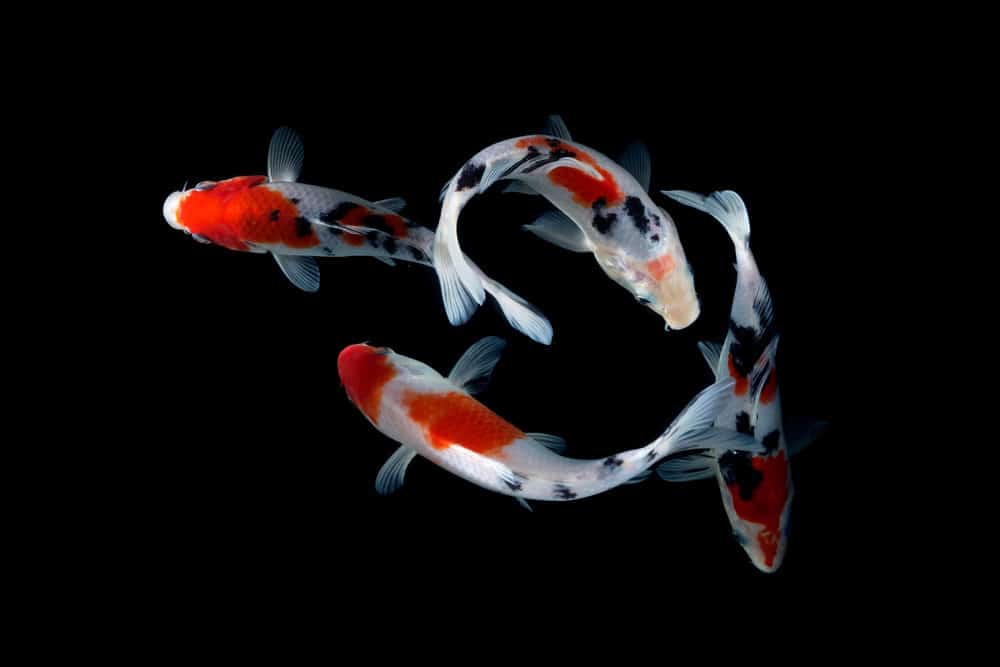
Female fish tend to rub and scrape against rough pond surfaces during spawning as they release their eggs. The irritation that this sort of activity creates can leave them vulnerable to infection. To make matters worse, spawning also tends to have a negative impact on water quality.
High concentrations of waste products like ammonia and nitrites can place a lot of stress on the Koi’s immune system. If you’re not monitoring the water quality in your pond, you could be allowing your Koi to fall victim to ulcers and other ailments.
Koi ulcers aren’t just unsightly and uncomfortable-they also come with a host of other issues. For example, fish suffering from severe KUD might also be at risk of:
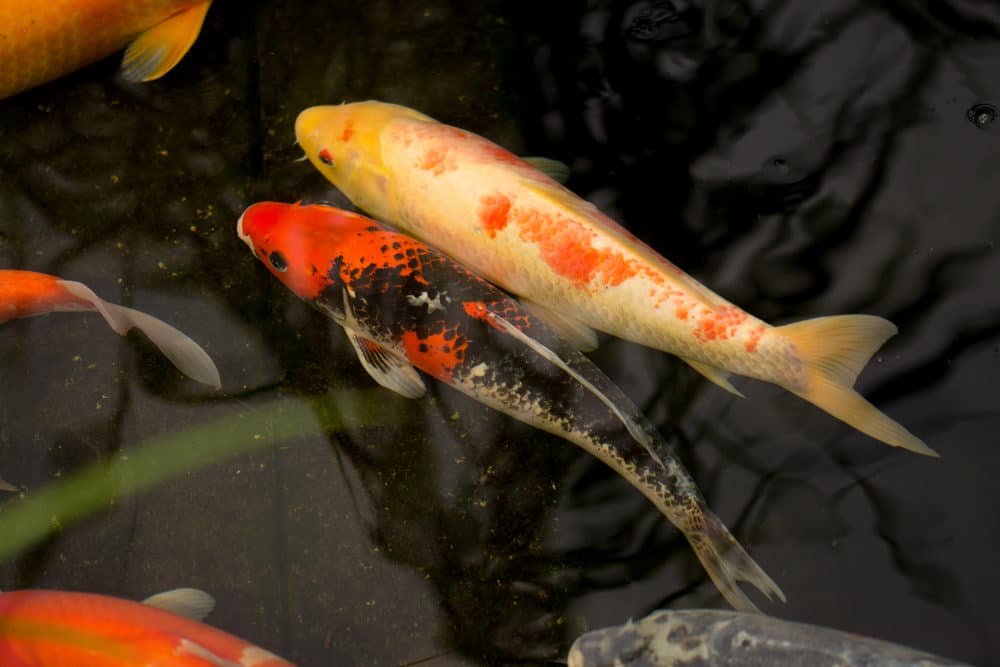
Fortunately, you’re not powerless in the face of KUD.
At-home Koi ulcer treatment is surprisingly simple. You don’t need a degree in aquatic veterinary medicine, nor do you need expensive tools or extensive training. All you need are a few basic materials and an idea of what might be causing the issue.
With that said, it’s always best to have a qualified aquatic veterinarian take a look at your Koi anytime you think there might be something wrong with them. However, if you lack the time or funds for a house call or find yourself dealing with ulcers frequently, it can be helpful to know how to remedy them yourself.
Whenever you suspect that water quality may be to blame for some illness or ailment, you should always make it a point to correct the problem before you do anything else.
Depending on the particulars of your pond, this could mean cleaning your pond, changing your Koi’s feeding regimen, or finding a more efficient filtration solution.
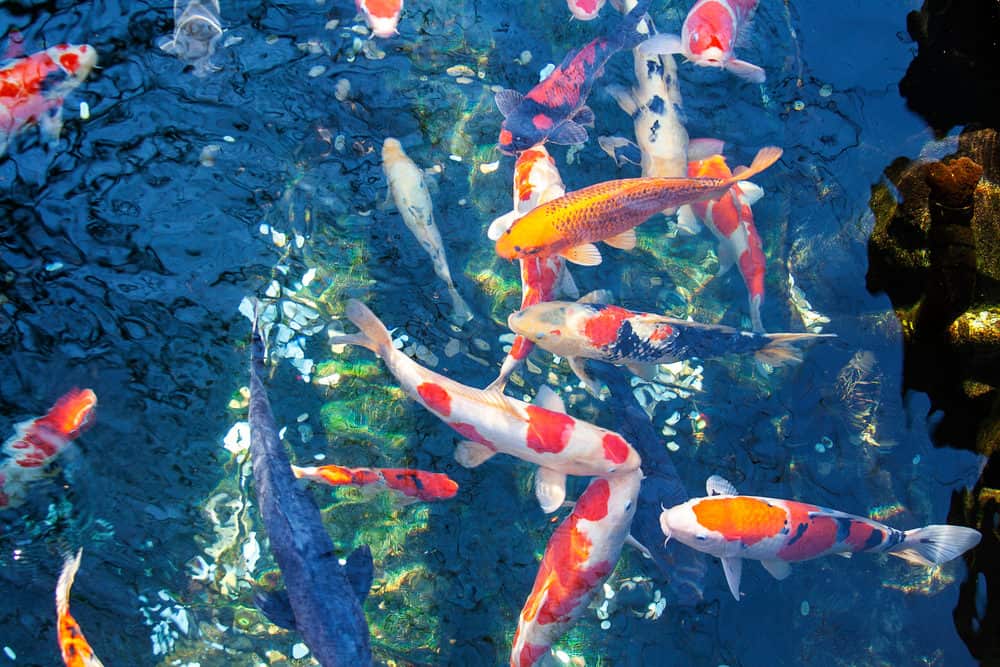
Providing much-needed oxygen via aeration in the form of fountains, streams, waterfalls, or agitation devices can also do wonders for improving water quality. Mild cases of KUD sometimes clear up on their own once the underlying cause has been dealt with.
You’ll know your Koi’s ulcers are getting better when they go from a fiery red color to soft pink with white edges, which is an indication that the wound is beginning to heal. Severe ulcers may cause permanent scarring, and the fish may or may not be able to regrow the scales in the affected area.
To clean a Koi ulcer and protect the site from further irritation, you’ll need a large bucket, a net, a cotton swab, some hydrogen peroxide, topical betadine, and a little clove oil or some other means of sedating the affected fish. Here’s how to perform ulcer swab cleans for your Koi:
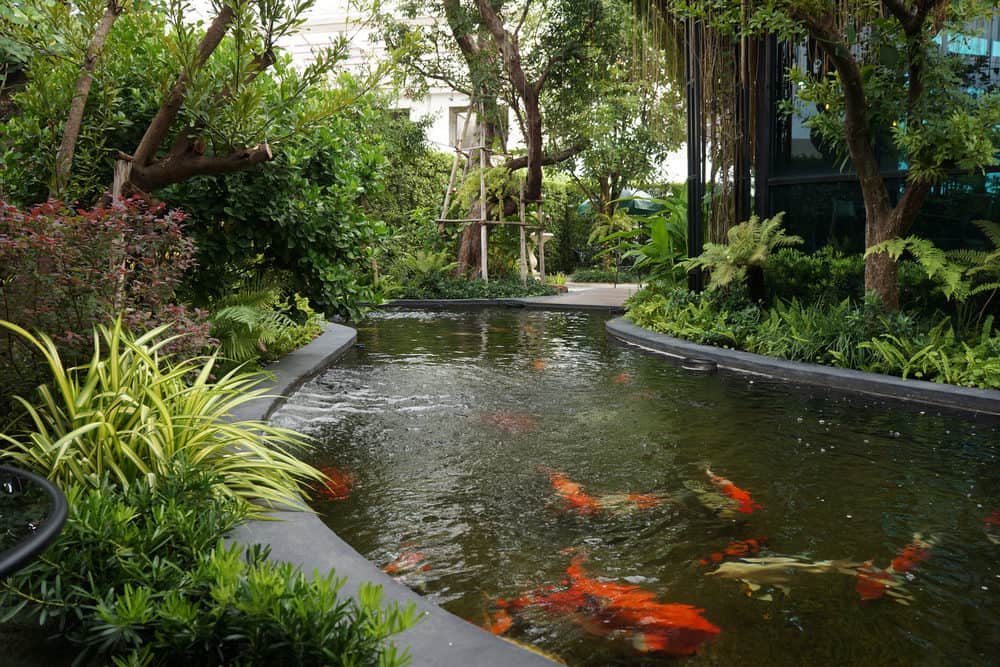
Note: If you opt to use Fin & Body Cure, keep in mind that it’s medicated and may therefore change the color and chemical composition of your pond water slightly.

